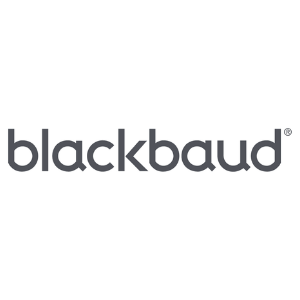Insights
INSIGHTS
All Topics
How to choose the right social media platform for your charity
23 Sep 2024by Krystal Jones
We explore how your charity can define a target audience, pick the right goals, and choose the best social media platform
Social media has become an essential tool to help charities connect with their audience, raise awareness, and generate funding and support. According to Empower, 55% of people who engage with charities on social media take action, with 59% donating money, 53% volunteering, and 43% attending charity events.
With numerous platforms to choose from, selecting the best one for your charity can feel a little overwhelming. In this article, we cover the key points you should consider before choosing social media platforms.
Who is your target audience?
Your first task is working out your target audience. If you focus efforts on the people most likely to support your mission, you will see much more engagement throughout social platforms.
There are four types of target audiences commonly seen in the charity sector:
- Donors: Individuals or organisations who provide financial support
- Volunteers: People who donate their time and skills to the charity
- Beneficiaries: People or communities who directly benefit from charity services
- Advocates: Individuals or groups who support the charity’s mission and raise awareness
Before sifting through all the platforms you could grace with your organisation’s presence, let’s explore the data of current donors.
Age and location are two of your most important demographics. You will need to tailor your content heavily to these demographics. If you have no way of accessing data yet because you don’t have any pre-existing platforms, do not worry. All you need to do is have a think about who you want to attract and why.
What are your goals? Try to focus on one specific goal, such as obtaining more volunteers, and tailor content to them. If you are just starting out and pick too many targets at once, your content can come across as confusing and less attractive to your initial audience because there just isn’t enough of it yet.
What are the best social media platforms?
Now we know more about your target audience, it’s time to match it to a social media platform.
Let’s dive into some facts about each.
Age: Facebook attracts an older user base but the average age of users is between 18–34.
Content: Great for all types of content from images, videos, and events.
Location: Great for targeting local communities and like-minded individuals especially via Facebook groups.
Find out more about Facebook here.
TikTok
Age: Used most by younger generations – the most popular demographic are aged 13–24.
Content: Great if your Charity is hot on trends and like making (mainly short-form) video-based content.
Location: Global.
Find out more about TikTok here.
Age: Most used by 18–34-year-olds, with 62% of Instagram users in that demographic.
Content: Heavy on images, carousels and short form videos that allow you to tag a location and other people and organisations.
Location: Global.
Find out more about Instagram here.
X
Age: Commonly 18–34-year-olds and used by celebrities and organisations.
Content: Short-form copy mainly but use of images and video popular.
Location: Global
Find out more about X (formally Twitter) here.
Threads
Age: Primarily under 35, with the most popular age bracket being 18–24.
Content: Short-form copy mainly but use of videos and images also possible.
Location: Global.
Find out more about threads here.
Age: According to Hootsuite, 67% of LinkedIn users are millennials, 20% are Gen Z.
Content: All types of content quite popular, including long form content, events, carousels, and videos.
Location: LinkedIn allows you to target specific areas by connecting with people in the same areas and field as you and via groups relevant to your location.
Find out more about LinkedIn here.
Steps to take once you’ve decided on a platform
Once you have the data or the goal (even better if you have both) running socials for your non-profit becomes a lot less daunting. But you’ll still need to take various steps to ensure success.
One of the most important routes to success is consistency. This can be challenging, but using scheduling platforms and artificial intelligence (AI) can make it a lot easier.
Hootsuite is a great platform for scheduling social media posts. You can take time out once a week or once a month to schedule posts for as far in to the future as you’d like and you don’t have to be there every day for them to go out. You can get up to 75% off via the Charity Digital Exchange.
And AI can help generate content ideas, even producing content calendars as guidance.
Set times you want to post and stick to them. You may pick times according to your target audience. For example, you may post around 7am to catch commuters or just before lunch time to catch people on their lunch breaks.
Quality is more important than quantity. Provide valuable facts and information about your cause and mission that will resonate with your audiences emotionally and inspirationally.
It’s all about testing. Stick with something for a month and see how it goes. Try to keep up with social trends and charity-specific awareness days.
And remember to constantly monitor your analytics, to find areas of improvement. Choosing the right social media platform for your charity is essential for effectively reaching your target audience and achieving your goals.
By understanding the demographics and features of each platform, you can tailor your strategy to maximise your impact.
Krystal Jones
More on this topic
Recommended Products
Recommended Products
Featured Products
Related Videos
17 Dec 2024by Laura Stanley
Webinar: Elevating your social media content with Adobe Express
17 Dec 2024by Josie Sparling
Podcast: How to make your social media accessible and inclusive
Our Events
Charity Digital Academy
Our courses aim, in just three hours, to enhance soft skills and hard skills, boost your knowledge of finance and artificial intelligence, and supercharge your digital capabilities. Check out some of the incredible options by clicking here.



















